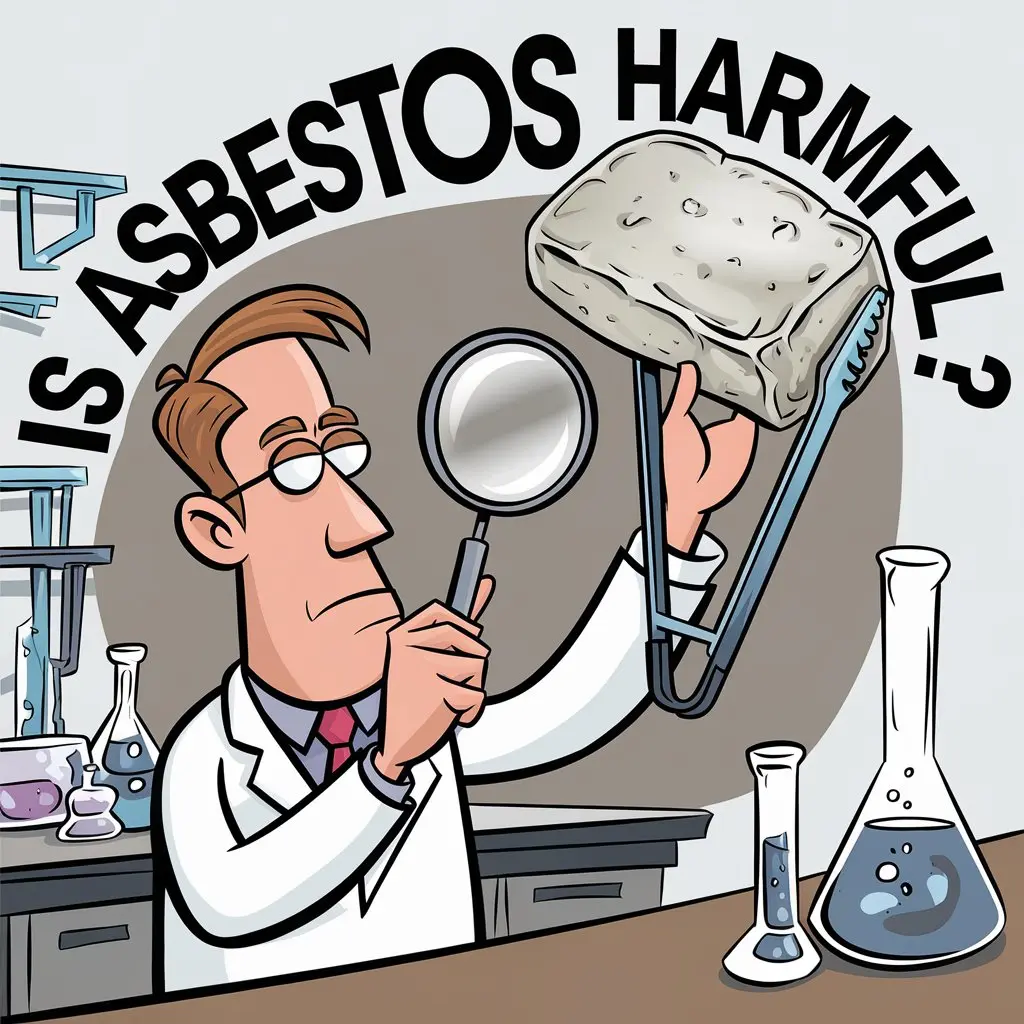Asbestos is harmful. Exposure to asbestos can lead to serious health conditions, including lung cancer, asbestosis, and mesothelioma. These diseases can develop many years after exposure. If you live or work in a building with asbestos-containing materials, the risk is significant, particularly if those materials are damaged or disturbed. This article explains the dangers of asbestos, how it harms the body, and why it is crucial to manage it safely.
What Is Asbestos?
Asbestos is a group of naturally occurring minerals made up of tiny fibers. These fibers are heat-resistant, durable, and were once commonly used in construction materials like insulation, roofing, and flooring. However, the harmful effects of asbestos exposure became clear over time, leading to a decline in its use. Despite this, asbestos remains in many older buildings, posing ongoing health risks.
How Does Asbestos Cause Harm?
Asbestos is dangerous when the fibers become airborne and are inhaled. When disturbed, the fibers break free and can easily enter the lungs. These fibers are too small to be seen with the naked eye, and once inside the lungs, they can cause severe damage over time.
When inhaled, asbestos fibers can become lodged in the lung tissue. This causes inflammation and scarring, which can eventually lead to lung diseases. The body’s immune system tries to remove these fibers, but it often fails, leading to long-term health complications.
Lung Cancer
Lung cancer is one of the most common diseases caused by asbestos exposure. The risk of developing lung cancer increases significantly for individuals who have been exposed to asbestos, especially if they also smoke. It may take decades for the disease to develop, which is why people may not realize they have been affected until it is too late.
Asbestosis
Asbestosis is a chronic lung condition caused by inhaling asbestos fibers. It leads to scarring of the lung tissue and makes it difficult to breathe. The condition worsens over time and can lead to heart failure in severe cases. Asbestosis typically develops after prolonged exposure to high levels of asbestos.
Mesothelioma
Mesothelioma is a rare form of cancer that affects the lining of the lungs, abdomen, or heart. It is almost exclusively caused by asbestos exposure. The symptoms of mesothelioma may not appear until 20-50 years after exposure, making early detection difficult.
How Can You Be Exposed to Asbestos?

Asbestos exposure can occur in various ways. The most common cause of exposure is working in environments where asbestos-containing materials are used, such as construction, shipbuilding, or manufacturing. People working in these industries are at high risk, especially if they do not use protective equipment or follow safety protocols.
Other ways to be exposed to asbestos include:
- Renovation or demolition of old buildings: If you are involved in renovating or demolishing buildings built before the 1980s, you may disturb materials that contain asbestos.
- Home or building maintenance: Homeowners or maintenance workers who perform tasks like repairing insulation, removing old flooring, or repairing roof shingles may unknowingly disturb asbestos-containing materials.
- Secondhand exposure: Family members of workers exposed to asbestos may also be at risk. Asbestos fibers can cling to clothing, skin, and hair, and can be transferred to others in the home.
How to Identify Asbestos in Your Home or Building
Asbestos is not easy to identify just by looking at it. Many materials that contain asbestos look similar to other materials that do not. The only way to confirm if a material contains asbestos is through testing by professionals. If you live in a building built before the 1980s, it is a good idea to have it inspected, especially if you are planning renovations.
What Should You Do if Asbestos Is Found?

If asbestos is found in your home or workplace, it is important to take immediate action. The best course of action depends on the condition of the asbestos-containing materials:
- Intact materials: If the materials are in good condition and not disturbed, they may not pose an immediate risk. However, regular inspections should be conducted to ensure the materials remain intact.
- Damaged or deteriorating materials: If the materials are damaged or deteriorating, they should be removed or repaired by professionals. Disturbing asbestos materials increases the risk of fiber release and exposure.
Safe Asbestos Removal
Asbestos removal should always be performed by trained professionals who are certified in asbestos abatement. These experts follow strict safety guidelines to minimize the risk of exposure. They use specialized equipment to handle, remove, and dispose of asbestos-containing materials in a safe manner.
If you suspect asbestos in your home, do not attempt to remove it yourself. DIY asbestos removal can be dangerous, and improper handling can release harmful fibers into the air.
Preventing Asbestos Exposure
The most effective way to prevent asbestos-related diseases is to avoid exposure. If you live or work in a building with asbestos-containing materials, here are some precautions to reduce the risk:
- Hire professionals for inspection and testing: If you suspect asbestos, hire a certified asbestos testing company to inspect and test the materials in your property.
- Do not disturb asbestos materials: Avoid disturbing any asbestos-containing materials. Do not cut, sand, or remove them unless they are professionally handled.
- Follow safety protocols for renovations: If you plan to renovate a building built before the 1980s, make sure to hire professionals who follow proper asbestos safety procedures.
Conclusion
Asbestos is harmful and poses a serious health risk. Exposure can lead to dangerous diseases like lung cancer, asbestosis, and mesothelioma. It is important to take precautions when dealing with older buildings that may contain asbestos. If you suspect asbestos in your home or workplace, have it tested and, if necessary, removed by certified professionals. Taking these steps can help protect your health and the health of those around you.
Contact Us For more
Email: [email protected]
Phone Number: +937 252-4724
Address: 2617 S Smithville Rd, Dayton, Oh, United States

Dr. Chris Cameron is a leading asbestos expert with over two decades of experience in occupational and environmental health. He holds a Ph.D. in Environmental Science and has worked extensively with government agencies, private sector organizations, and health and safety regulators to assess, manage, and mitigate asbestos-related risks. Dr. Cameron is widely recognized for his research on asbestos exposure, remediation strategies, and public health policy